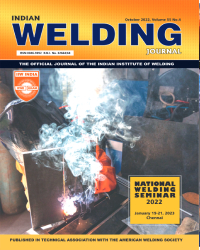Review of Weldment Creep and Fatigue Strength Reduction Factor for Design of Elevated Temperature Components
Subscribe/Renew Journal
Weldments can be the life-limiting feature of high-temperature components and premature failures of weldments have become a matter of concern in the recent times. In order to allow for the weakening effect of the welas in the design, factors are applied to the parent material properties. The two factors which are of current interest are the fatigue strength reduction factor, and the creep strength reduction factor, although the creep-fatigue strength reduction factor also needs consideration. This paper provides some of the background for these factors and their use in the nuclear as well as non-nuclear pressure vessel design codes. The results of recent works carried out for ferritic steels, austenitic steels and dissimilar metal welds are also brought out.
User
Subscription
Login to verify subscription
Font Size
Information

Abstract Views: 352

PDF Views: 4



